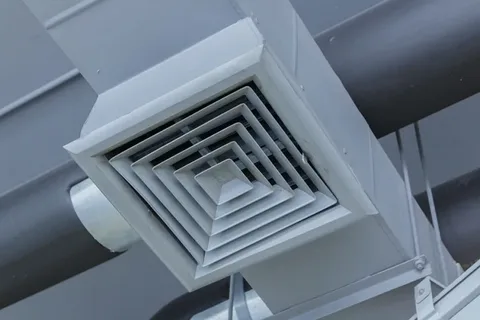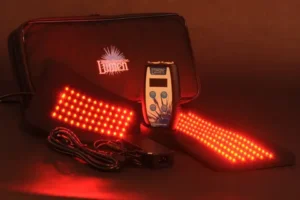In the realm of off-grid living, sealed 12V deep cycle batteries are crucial, ensuring consistent and reliable power storage. These sealed 12V deep cycle battery are crafted to deliver stable energy over long durations, making them highly suitable for various applications. Whether supporting solar power systems or camping equipment, they provide an efficient and dependable energy-saving solution. Unlike standard car batteries, designed for short bursts of high current, deep-cycle batteries can be discharged and recharged multiple times. Their sealed design helps prevent leakage and minimises maintenance, making them a practical choice for those seeking a reliable power source in various conditions.
Grasping the Fundamentals of Batteries
A sealed 12V deep-cycle battery is characterised by its ability to provide a consistent current over extended periods. These batteries are designed to endure numerous cycles of discharging and recharging without significant degradation. Unlike standard car batteries, deep-cycle batteries have thicker plates, enabling them to sustain prolonged energy delivery. The sealed design eliminates the risk of leakage, making them safer and less maintenance-intensive than traditional lead-acid batteries. Their construction includes a lead dioxide plate, a sponge lead plate, and an electrolyte solution that facilitates electrochemical reactions essential for energy storage. Such robust construction allows these batteries to function effectively across various environmental conditions.
A Thorough Guide to 12V Sealed Lead Acid Deep Cycle Battery
Sealed lead acid deep-cycle batteries are widely favoured for off-grid setups due to their dependable nature and minimal maintenance needs. The sealed design ensures they are spill-proof, allowing flexible mounting options. These batteries comprise three core components: the lead dioxide plate, the sponge lead plate, and the electrolyte solution, which enable essential electrochemical reactions for energy storage. Their sturdy construction contributes to their longevity and consistent performance, which is vital for any off-grid system. In addition, these 12v sealed lead acid deep cycle battery are designed to withstand numerous charging and discharging cycles, maintaining their efficiency over time. This robust build quality ensures they function effectively across different environmental conditions, providing a reliable energy source for various off-grid applications.
Uses in Off-Grid Lifestyle
Sealed 12V deep cycle batteries are integral to various self-sufficient power solutions. Below, we explore their applications and benefits.
Energy Storage for Solar Systems
These batteries are a key component in solar energy setups, efficiently storing electricity generated by solar panels. This ensures that power is available even when sunlight is scarce, allowing for a consistent energy supply around the clock.
Powering Recreational Vehicles
These batteries are essential for those travelling in recreational vehicles (RVs). They provide electricity for crucial appliances and devices, enabling longer journeys without connecting to external power grids. This allows for a more independent and flexible travel experience.
Marine Power Solutions
These batteries deliver steady power to boats and yachts in marine environments. Their durable design withstands the harsh conditions of sea travel, making them a reliable choice for marine power needs.
Backup Power for Remote Locations
Their durability and capacity to handle multiple charging cycles make them perfect for backup power systems in secluded cabins and during emergencies. These batteries offer peace of mind by ensuring that power is available when it’s most needed.
Portable Power for Outdoor Activities
Finally, these batteries are favoured for outdoor adventures like camping and tailgating. They effectively power various equipment, including refrigerators, lighting, and communication devices, enhancing the outdoor experience with the comforts of electricity.
Maintaining Your Sealed Lead Acid Deep Cycle Battery: Advice and Techniques
Proper upkeep is essential for extending the lifespan of sealed lead acid deep cycle batteries. Regularly monitoring the battery’s state of charge and avoiding deep discharges can help preserve its capacity. A charger specifically designed for sealed batteries ensures optimisation of the charging process and reduces the risk of overcharging. While these sealed lead acid deep cycle battery are relatively low-maintenance, storing them in a cool, dry location can significantly enhance their performance. Cleaning the terminals to prevent corrosion is also advisable. Periodically inspecting the battery for any signs of damage or wear can preemptively address potential issues. Additionally, ensuring the battery is used within its specified temperature range helps maintain its efficiency.
Anticipated Performance
The anticipated performance of a sealed 12V deep-cycle battery is influenced by various factors, including environmental conditions, depth of discharge, and charging rates. These batteries are built to perform consistently across different climates, though extreme temperatures can impact their efficiency and longevity. Proper cycling and maintaining an optimal depth of discharge are crucial to sustaining performance over time. The battery’s ability to provide steady power is particularly advantageous for applications requiring prolonged energy supply, such as solar power systems and recreational vehicles. Ensuring the battery is charged correctly and stored in favourable conditions further enhances its operational efficiency. Users can expect reliable performance when adhering to recommended usage practices.
Selecting the Appropriate Sealed Deep Cycle Battery for Your Requirements
Selecting an appropriate sealed deep-cycle battery requires evaluating several critical factors. Primary considerations should include the devices’ total energy consumption and the available charging sources. Choosing a sealed deep cycle battery with sufficient capacity to meet these energy demands is crucial, thereby reducing the need for frequent deep discharges, which can diminish battery lifespan. Physical space constraints for installation must also be considered, ensuring the battery fits the designated area without compromising safety or accessibility. Comparing models and brands based on cycle life, warranty, and cost can provide valuable insights. Key specifications such as ampere-hour (Ah) ratings and discharge characteristics should be assessed to ensure compatibility with intended applications. Understanding these elements will help you make an informed decision tailored to specific requirements.
Considerations for Installation
Properly installing a sealed deep-cycle battery is essential to ensure safety and optimal performance. Following manufacturer guidelines is crucial, particularly in securely mounting the battery in a stable and well-ventilated location. Adequate ventilation is necessary to prevent heat build-up, especially during charging cycles. It is also advisable to avoid placing the battery in areas exposed to direct sunlight or high temperatures, as this can compromise battery health.
Ensuring correct wiring is paramount to prevent any operational issues. Using appropriate connectors and cables to handle the expected load will reduce the risk of overheating or electrical faults. The installation site should also be easily accessible for regular maintenance checks, such as inspecting terminals for corrosion or verifying the state of charge.
In applications like recreational vehicles or boats, where vibrations are common, securing the battery with brackets or straps is essential to prevent movement. This enhances safety and prolongs battery life by reducing physical stress on the components.
Compatibility with other components, such as inverters and charge controllers, should be verified when integrating the battery into an existing power system. This ensures that the battery functions efficiently within the overall system. Protective measures, such as fuses or circuit breakers, are also recommended to safeguard against electrical faults. Adhering to these considerations can ensure a smooth installation process and maximise the efficiency and lifespan of the sealed deep-cycle battery.
Conclusion
Sealed 12V deep cycle battery are a highly effective solution for off-grid energy needs. Their sealed design ensures minimal maintenance and a spill-proof nature, making them suitable for various applications, from solar power systems to recreational vehicles. Selecting the appropriate battery involves considering energy demands, space constraints, and compatibility with other system components. Proper installation is vital to maximise efficiency and longevity. Secure mounting, adequate ventilation, and correct wiring are essential steps. It is also crucial to use connectors and cables to handle the expected load and prevent overheating or electrical faults.
FAQ’s
What is a sealed 12v deep cycle battery?
A sealed 12V deep cycle battery is a type of rechargeable battery designed to deliver consistent power over extended periods. Unlike standard car batteries, deep-cycle batteries can be repeatedly drained and recharged without significant damage. This makes them ideal for powering off-grid appliances, camping gear, and marine equipment.
How long does a sealed 12v deep-cycle battery last?
The lifespan of a sealed 12V deep-cycle battery can vary depending on factors such as usage, temperature, and maintenance. However, with proper care, you can expect a lifespan of several years. To prolong the battery’s life, avoid deep discharges, store it in a cool, dry place, and regularly check the electrolyte level (if applicable).
What is the difference between a deep-cycle battery and a marine battery?
While deep cycle and marine batteries are designed for sustained power delivery, marine batteries are often built to withstand harsh marine environments, including vibration, moisture, and temperature fluctuations. However, many deep-cycle batteries can also be used in marine applications, especially in freshwater environments.
How do I charge a sealed 12v deep-cycle battery?
Sealed 12V deep cycle batteries can be charged using a suitable battery charger. It’s essential to use a charger designed for deep-cycle batteries, as standard car chargers may not be suitable. Always follow the manufacturer’s instructions for charging times and current limits to avoid damaging the battery.
Can I use a deep cycle battery to power my car?
While deep-cycle batteries can provide consistent power over extended periods, they are not designed for the high-current demands of starting a car engine. Using a deep-cycle battery as a car battery may lead to poor performance and reduced battery life. It’s recommended that you use a standard car battery for starting your vehicle.
| Related Business Listings |
| Contact Directory |
| Local Business Profiles |





